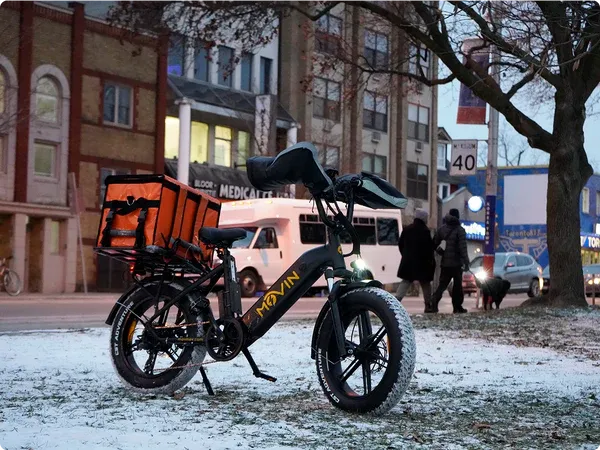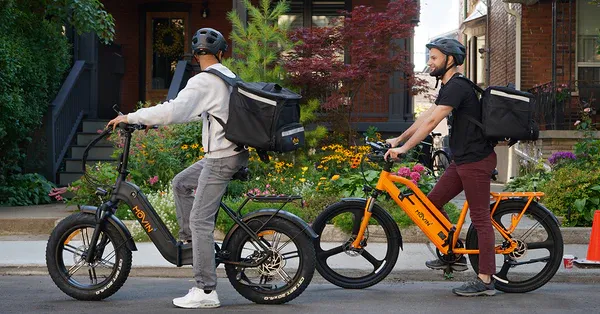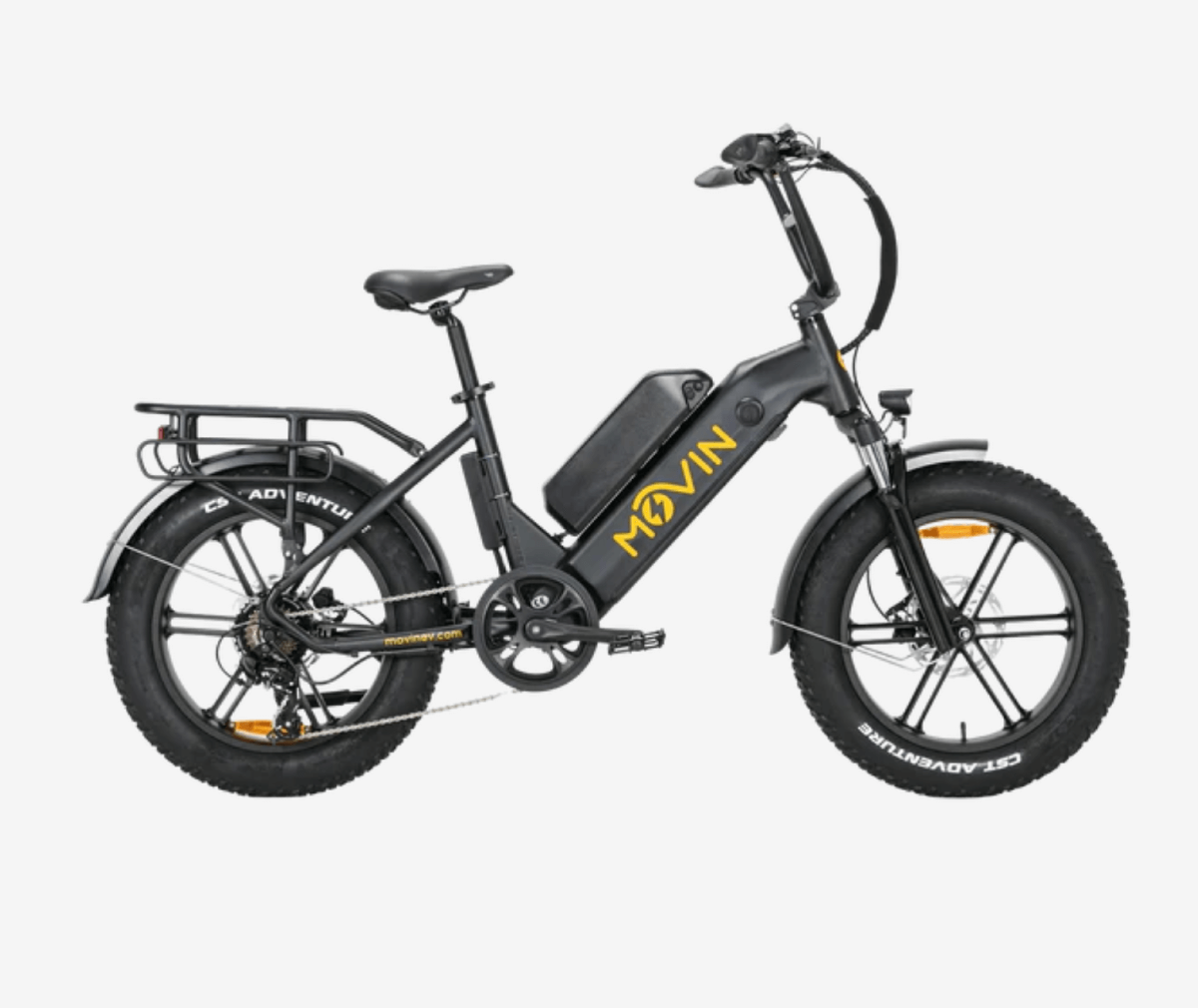The Rise of Cargo E-Bike Canada Models in Urban Life (2025 Update)
Bright delivery vests, busy intersections, and the whir of an electric motor—there’s a new norm taking over Canadian streets. Across cities like Toronto and Vancouver, cargo and utility e-bikes are everywhere, serving both families and local businesses looking for efficiency, flexibility, and a lighter footprint. Their rise isn’t a passing fad. As more people search for practical and greener transportation, the phrase cargo e-bike Canada keeps popping up in conversations about urban commutes and sustainable delivery.
Whether you're delivering groceries, carting kids to school, or running errands, these bikes are proving themselves day after day. Their practical design and all-weather durability make them ideal for Canadian roads and winters, helping riders cut costs and emissions. If you’re curious how these bikes are changing city life—and want to see what options are leading the way—take a look at the cargo delivery e-bikes collection. This surge is reshaping how we move and work in Canada’s busiest cities.
How Cargo E-Bikes are Reshaping Urban Transportation
 The sight of a loaded cargo e-bike weaving through city streets is becoming more common every month in Canada. These electric workhorses are shifting how businesses deliver packages, how families run errands, and how cities think about keeping streets moving and clean. Cargo e-bike Canada models are built to handle our tough winters, heavy payloads, and long daily routes, offering a real alternative to cars or gas-powered vans in busy urban neighborhoods.
The sight of a loaded cargo e-bike weaving through city streets is becoming more common every month in Canada. These electric workhorses are shifting how businesses deliver packages, how families run errands, and how cities think about keeping streets moving and clean. Cargo e-bike Canada models are built to handle our tough winters, heavy payloads, and long daily routes, offering a real alternative to cars or gas-powered vans in busy urban neighborhoods.
Common Uses: From Last-Mile Delivery to Family Rides
Cargo and utility e-bikes are like Swiss Army knives for transportation. Their ability to carry bulk without breaking a sweat fits a range of needs:
- Last-mile deliveries: Local shops, national carriers, and independent couriers rely on cargo e-bikes to shuttle everything from takeout dinners to online orders straight to a customer’s door. With designated lanes and easy parking, e-bikes often beat traffic.
- Family transport: Parents zip through morning congestion with kids secured in sturdy cargo bins, dodging the headaches of school drop-off lines.
- Grocery runs and errands: Riders can fit weeks’ worth of groceries, pet supplies, or sports gear thanks to reinforced frames and weather-resistant cargo bags.
The end result? Less car congestion on city streets, more smiles from riders weaving past traffic, and neighborhoods that feel a bit quieter and cleaner.
Pilot Projects and Popularity in Canadian City Centers
Several cities are testing programs that encourage delivery by e-bike instead of van, especially for dense downtown zones where parking is tight. Delivery companies large and small are adding cargo e-bikes to their fleets because it saves time and money while meeting strict climate goals.
Using a cargo e-bike Canada can cut delivery times on congested routes and help businesses fulfill more orders in a day. Add in support from city programs—like more protected bike lanes and curbside loading zones—and it’s easy to see why these bikes are sticking around, not just trending.
Fighting Congestion and Reducing Urban Pollution
Swap just a fraction of courier trucks and single-occupant cars for cargo e-bikes, and the impact is immediate. These bikes take up less space, let riders skip gridlock, and have zero direct emissions.
 Here’s how moving to cargo e-bikes helps city air and roadways:
Here’s how moving to cargo e-bikes helps city air and roadways:
- Reduced traffic: More bikes mean fewer vans double-parking and blocking lanes.
- Cleaner air: E-bikes produce no tailpipe pollution, supporting healthy breathing in crowded areas.
- Easier parking: Riders don’t circle for parking spaces. That rids streets of extra congestion and wasted fuel.
For businesses, investing in a specialized professional delivery e-bike for urban fleets means reliable performance, all-weather operation, and the ability to haul up to 50 kg per trip—features built around real courier feedback and Canadian infrastructure.
Why Canadian Design Matters
Canadian urban environments demand bikes that work year-round. Slush, ice, curb cuts, potholes—these aren’t minor issues. Brands focused on local needs, like Movin, test their cargo e-bikes for both non-stop professional use and daily family adventures. That focus on durability, simple maintenance, and maximum utility helps these bikes fit naturally into city life, no matter the season.
Cargo e-bike Canada models aren’t just a trend—they’re quickly becoming one of the smartest ways to move goods and people, making our cities a lot more livable for everyone.
Why Cargo E-Bikes Are Gaining Popularity in Canada
The buzz around cargo e-bike Canada models isn’t just hype—it’s a reaction to real urban challenges and changing priorities. As more people look for clean, practical ways to move goods and families, electric cargo bikes are stepping up across cities. From busy streets in Toronto to tight alleys in Montreal, they’re becoming a smart choice for anyone tired of gridlock and parking hassles.
 ### Urban Life Calls for Real Solutions
### Urban Life Calls for Real Solutions
Cargo e-bikes fit perfectly where cars and trucks fall short. In Canadian cities, parking is limited, roads are often crowded, and short trips make up a huge chunk of daily travel. With a cargo e-bike, riders can skip traffic, park almost anywhere, and stay productive all year—even when snow hits the ground. This means fewer delivery vans get stuck double-parked, and more families can run errands without needing a second car.
Environmental Awareness and Government Action
A growing number of Canadians want greener transport options. Cargo e-bikes check this box by producing zero direct emissions and using far less energy than a car or van. City governments are taking notice, too. More cities are rolling out subsidies and rebates to help people switch, while investing in bike lanes and safer streets. These actions make it easier—not just possible—to use a cargo e-bike for daily tasks.
Some provinces have even funded pilot projects, showing that when infrastructure improves, more people choose e-bikes for errands and deliveries. Programs focused on e-mobility not only cut pollution, they also help cities meet climate targets.
Improved Technology and Tougher Designs
Today’s cargo e-bike Canada models are engineered for both professional use and weekend outings. Advances in battery tech mean longer range even in cold weather, so I don’t have to worry about running out of power halfway through my day. Many bikes offer:
- Dual-battery options for all-day range
- Fat tires for stability on ice or potholes
- Weather-resistant electronics and cargo covers
Brands like Movin have built bikes specifically for Canadian winters, listening to real riders and updating features with every new release. If you want to get into the technical side of tough e-bike specs, you can check out their professional delivery e-bike specifications to see what goes into a durable urban cargo model.
 ### Practical Benefits Add Up
### Practical Benefits Add Up
It’s not just about being green or trendy. Cargo e-bikes are winning fans for easy, everyday reasons:
- Heavy load capacity: Carry up to 50 kg of groceries, tools, or parcels without a struggle.
- Cheaper to run: No need for gas, less maintenance than a car, and lower insurance costs.
- Reliable in all weather: Modern cargo e-bikes are proofed for rain, snow, and slush, just like a true Canadian should be.
Combine these points and it’s clear why more riders, families, and businesses now see cargo e-bikes as a smart move. For an even deeper dive into features, safety gear, and local tips, the Canada delivery e-bike guide is worth a look.
Market Growth and What’s Ahead
Sales of cargo e-bike Canada models have jumped sharply in 2024 and 2025, with shops often seeing year-over-year growth of more than 20%. More families, couriers, and small businesses are swapping cars for electric bikes, encouraged by city support and new product choices. Dealers in major cities can’t keep some top models in stock, proof that the appetite for reliable e-mobility is stronger than ever.
Each passing season, cargo e-bikes are carving out a bigger space on Canadian streets. With smarter infrastructure and better bikes, that trend only looks set to grow.
The Challenges and Future of Cargo E-Bikes in Canadian Cities
The road to mainstream adoption of cargo e-bike Canada models hasn’t been entirely smooth. Demand is rising, but there are still real challenges standing in the way for everyday people and businesses. At the same time, new ideas and technology are making things easier each year. Here’s what stands out about the hurdles, as well as why the future looks bright for these workhorse bikes in urban Canada.
 ### High Upfront Costs Slow Widespread Adoption
### High Upfront Costs Slow Widespread Adoption
One of the biggest sticking points for many is the price tag. Cargo e-bikes are a serious investment—often running several thousand dollars before you factor in accessories or upgrades. That number can be tough for a small-business courier or busy family to accept. Even with long-term savings on fuel and maintenance, sticker shock is real.
Government rebates and financing options are starting to help, but not everyone knows about them or how to access these programs. As more manufacturers create purpose-built models, the options and price points should improve. For those interested in tackling this barrier, exploring a shop’s cargo delivery e-bikes collection can offer insights into what’s currently available.
Charging and Winter Infrastructure Still Lags
While e-bike range keeps growing, finding a secure place to charge can be a challenge, especially for those living in apartment buildings or using e-bikes for all-day delivery. City streets aren’t yet set up for widespread e-bike charging, and there’s a continued need for indoor or curbside charging stations.
Winter brings extra headaches. Not every city prioritizes snow clearing on bike lanes, leaving riders worried about safety during deep freezes and ice. Lacking proper bike storage or covered shelters also means batteries and electronics can suffer from exposure.
What’s Being Done About It?
- New policy moves: Municipalities are expanding protected bike lane networks that see active snow and ice maintenance.
- Battery tech improvements: Better weather-sealing and heated battery options keep bikes running longer in the cold.
- Charging station pilots: Select buildings and public spaces have started to experiment with e-bike-friendly power outlets.
Manufacturers like Movin are constantly tweaking models to address these northern needs as feedback comes in from real Canadian riders. Bikes with fat tires, heavy-duty frames, and robust electronics are no longer optional—they’re basic requirements if you want to use a cargo e-bike Canada model year-round.
 ### Ongoing Design Innovations for Tough Conditions
### Ongoing Design Innovations for Tough Conditions
Canadian cities are an ongoing test track for e-bike durability. The mix of potholes, salt, and slush can wear out parts quickly. Cargo e-bike makers are now designing bikes around parts that are easy to service, minimize breakdowns, and hold up under daily punishment.
Key advancements you’ll see on modern delivery-focused models:
- Reinforced frames built for extra weight and harsh weather
- Dual-battery setups for long-range trips
- Integrated lighting and weather protection for safety in all conditions
If you want a deeper look at a bike made for professional daily use, check out this professional delivery e-bike that’s been road-tested across tens of thousands of Canadian kilometers.
The Future: Cleaner Cities and Growing Market Share
Looking ahead, the role of cargo e-bike Canada models will only keep expanding as city leaders look for practical ways to cut traffic and pollution. Forecasts for 2025 and beyond expect double-digit growth in e-bike usage, especially as more families and delivery services make the switch.
Key reasons for this growth include:
- Ongoing improvements in affordability, reliability, and service
- Supportive city policies around bike lanes, incentives, and parking
- Strong real-world reputations built by brands that listen to rider feedback
Cities that invest in e-bike infrastructure are already seeing quicker, quieter, and cleaner deliveries. Cargo e-bikes aren’t just solving transport problems—they’re setting a new standard for urban life, backed by a community passionate about keeping Canadian cities moving in any weather.
Conclusion
Cargo e-bike Canada models are no longer a niche idea—they’re a proven answer for cleaner, easier city travel. This shift is picking up speed, with steady growth in every major urban center and a surge in use for local deliveries and family errands. New policies and better infrastructure are giving people more reasons to switch, while fresh innovations make e-bikes more reliable, even in rugged Canadian winters.
Adopting a cargo e-bike Canada can actually make city life smoother and greener, whether you’re running a business or just trying to move through town with less stress. Thinking about joining the movement? Check out Movin’s durable range, designed for Canadian roads and real-world demands, or see how food delivery e-bikes in Toronto are shaking up last-mile delivery.
Thanks for riding along—share your thoughts or your own experience with a cargo e-bike Canada. The next chapter in city transport is already rolling out, and there’s still plenty of road ahead for everyone.
